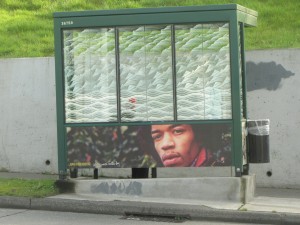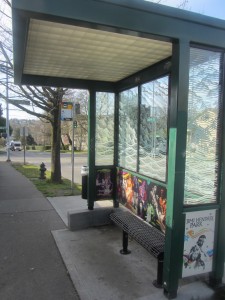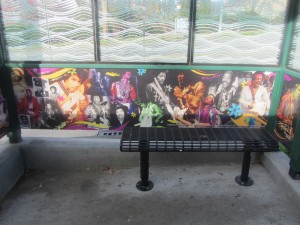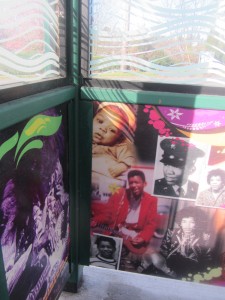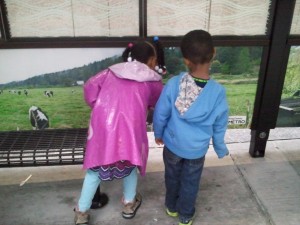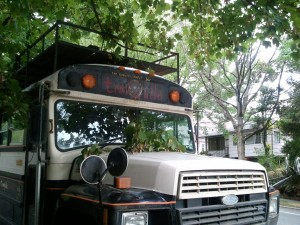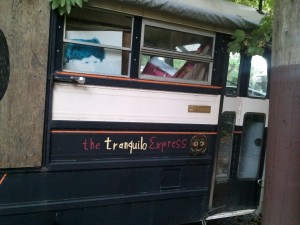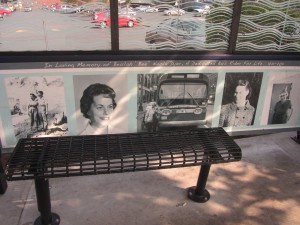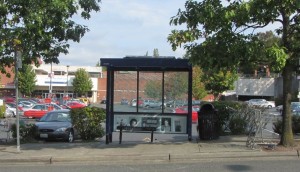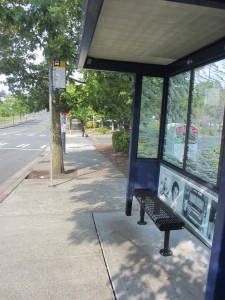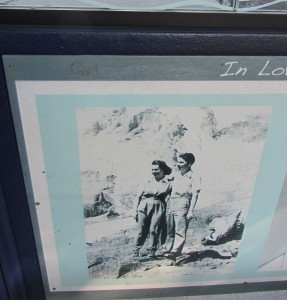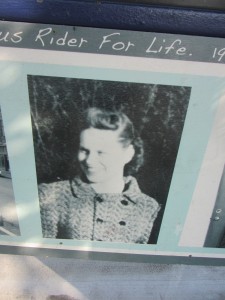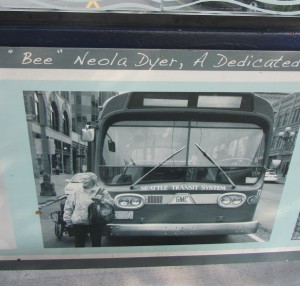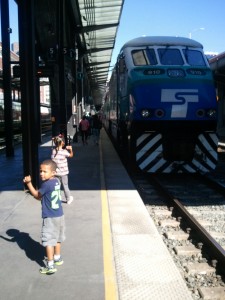
Let me begin this post by telling you how much I love the Sounder train. It is delightful. Truth be told, I enjoy the train a heck of a lot more than I enjoy the Puyallup Fair. Last year, Sounder was easily the best part of the entire fair adventure, and the fact that Sound Transit was running a fair shuttle again this year is a good part of the reason we decided to go.
Unfortunately, things didn’t turn out quite as well for our 2014 Puyallup pilgrimage.
The schedule for the shuttle is very limited this year; it only runs on September13th and the 20th, with three trips to the fair–leaving from Seattle at 10 AM, 11:45 AM, and 12:40 PM–and only one trip back, at 6:30 PM.
Since our only return option was on the late-ish side, we decided to take the 11:45 AM trip down. By the time we boarded the train in Seattle, it was already packed. After several minutes of wandering, we were able to find two seats in separate areas of the same car. Each of us ended up with a kid on our lap, but we were more fortunate than the riders who boarded after us, who did not find seats at all.
During the trip down, ST employees (or maybe fair people?) walked through the cars selling tickets to the fair, which was a great way to streamline the experience for riders. (They’re also selling train/fair “express packs” online this year.) We took advantage and bought our tickets on the way down.
Pierce Transit provided a shuttle from Puyallup Station to the fairgrounds (definitely an upgrade from the school bus ST used last year), but per usual, we opted to walk the half mile. It’s actually a very pleasant walk through downtown Puyallup–past the library and Pioneer Park–and it got us there faster than waiting for the shuttle would have. And, thanks to our ticket purchase on the train, we were able to bypass the line and walk right in.
The fair itself was the same as always. We ate. We listened to music. We saw draft horses and piglets. We rode some rides. We ran into friends.
Because we anticipated extreme crowding on the ride back (three trains’ worth of folks trying to fit onto one train), we headed back to Puyallup Station at about 5:50 PM. By the time we arrived, at around 6:00 PM, the line looked like this.
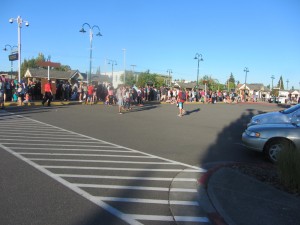
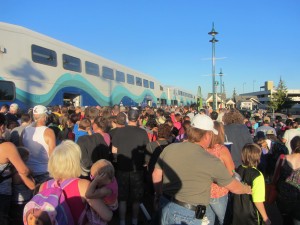
Needless to say, we didn’t make it on board. When the train finally pulled away from the station at a little past 6:30, it was so full the driver could barely get the doors closed. The hundreds of folks left behind milled around, confused, until word got around that buses were coming. A few minutes later, they arranged us according to destination.
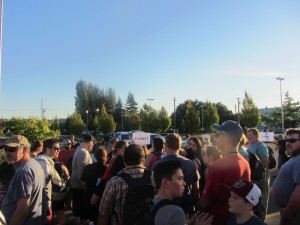
By this time, Chicklet had to use the bathroom. Unlike the Sounder, buses don’t have restrooms, and there was no way she was going to make it through a 45-minute ride without one. An ST staffer directed us to a porta potty, and we managed to make it there and back just as the bus to Seattle was pulling up.
The ride back to Seattle was lovely. We had seats together, fair scones (ST staff handed them out while we waited for our buses), and gorgeous views of The Mountain. We leaned back, relaxed, joked, and relived our experiences while the sun set outside the bus windows and the driver apologized for the inconvenience over the PA.
By the time the bus dropped us off at 5th & Jackson, both kids had to use the restroom. (It wouldn’t be a bus fam adventure without a trillion trips to public restrooms.) We hustled to King Street Station, took care of business, then full-on sprinted for the 14. By 8:30, we were home, exhausted and grateful.
There is no doubt that Sound Transit botched the planning for its fair service this year. They didn’t even do a very good job of managing communication during the drama. The day probably wasn’t the best advertisement for public transportation–either for the folks crammed on the train or for those left stranded at the station after a long day.
On the other hand, thanks to some scrambling by ST staff–and off-duty drivers who were willing to help out on short notice–everyone made it back where they started. And, if I may inject a bit of perspective: Trips to the fair are one thing. Until we adequately fund transit, people with far more important destinations will continue to be passed up and left behind.
Here’s hoping for a smoother experience next year. Or, maybe we’ll just go back to riding the 578.

